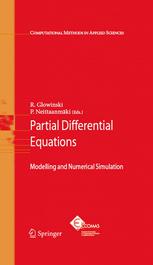

Most ebook files are in PDF format, so you can easily read them using various software such as Foxit Reader or directly on the Google Chrome browser.
Some ebook files are released by publishers in other formats such as .awz, .mobi, .epub, .fb2, etc. You may need to install specific software to read these formats on mobile/PC, such as Calibre.
Please read the tutorial at this link: https://ebookbell.com/faq
We offer FREE conversion to the popular formats you request; however, this may take some time. Therefore, right after payment, please email us, and we will try to provide the service as quickly as possible.
For some exceptional file formats or broken links (if any), please refrain from opening any disputes. Instead, email us first, and we will try to assist within a maximum of 6 hours.
EbookBell Team

4.0
56 reviewsThis book is dedicated to Olivier Pironneau.
For more than 250 years partial differential equations have been clearly the most important tool available to mankind in order to understand a large variety of phenomena, natural at first and then those originating from human activity and technological development. Mechanics, physics and their engineering applications were the first to benefit from the impact of partial differential equations on modeling and design, but a little less than a century ago the Schrödinger equation was the key opening the door to the application of partial differential equations to quantum chemistry, for small atomic and molecular systems at first, but then for systems of fast growing complexity.
Mathematical modeling methods based on partial differential equations form an important part of contemporary science and are widely used in engineering and scientific applications. In this book several experts in this field present their latest results and discuss trends in the numerical analysis of partial differential equations. The first part is devoted to discontinuous Galerkin and mixed finite element methods, both methodologies of fast growing popularity. They are applied to a variety of linear and nonlinear problems, including the Stokes problem from fluid mechanics and fully nonlinear elliptic equations of the Monge-Ampère type. Numerical methods for linear and nonlinear hyperbolic problems are discussed in the second part. The third part is concerned with domain decomposition methods, with applications to scattering problems for wave models and to electronic structure computations. The next part is devoted to the numerical simulation of problems in fluid mechanics that involve free surfaces and moving boundaries. The finite difference solution of a problem from spectral geometry has also been included in this part. Inverse problems are known to be efficient models used in geology, medicine, mechanics and many other natural sciences. New results in this field are presented in the fifth part. The final part of the book is addressed to another rapidly developing area in applied mathematics, namely, financial mathematics. The reader will find in this final part of the volume, recent results concerning the simulation of finance related processes modeled by parabolic variational inequalities.